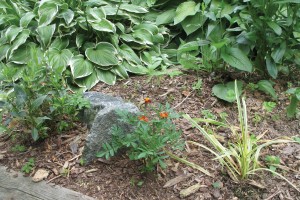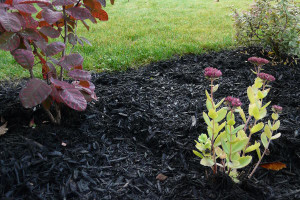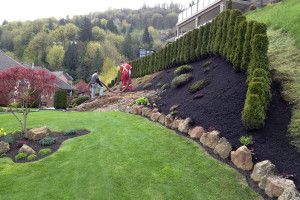The Best Time of Year to Seed is NOW!
/0 Comments/in Fall Landscape Ideas, Landscape, Landscape Journal, Seeding /by Tanya RichardsLandscaping Tips To Do Every Autumn
/0 Comments/in Fall Landscape Ideas, Landscape, Landscape Journal, Landscape Mulch, Landscape Supply, Seeding /by Tanya RichardsThe Landscape Trends of 2019
/0 Comments/in Fall Landscape Ideas, Landscape, Landscape Journal, Spring Landscape Ideas, Summer Landscape Ideas, Winter Landscape Ideas /by Tanya RichardsFall Lawn Care Tips
/0 Comments/in Fall Landscape Ideas, Landscape, Landscape Journal /by Tanya RichardsFall Landscaping Care: 6 Steps to Take Right Now
/0 Comments/in Fall Landscape Ideas, Landscape, Landscape Journal, Landscape Mulch, Landscape Supply /by Tanya RichardsA History of Lawns
/0 Comments/in Blower Truck Services, Construction Landscape Journal, Corporate News, Environment, Fall Landscape Ideas, Green Infrastructure, Landscape, Landscape Journal, Municipal and Infrastructure Journal, Projects, Sediment Control, Seeding, Soil, Spring Landscape Ideas, Summer Landscape Ideas, Sustainable Development /by Tanya Richards20 Reasons Why You Should Use Mulch In Your Garden
/0 Comments/in Fall Landscape Ideas, Landscape, Landscape Journal, Landscape Mulch, Landscape Supply, Spring Landscape Ideas, Summer Landscape Ideas, Winter Landscape Ideas /by Tanya Richards10 Steps to Stunning Landscape Design
/0 Comments/in Fall Landscape Ideas, Landscape, Landscape Journal, Landscape Mulch, Landscape Supply, Spring Landscape Ideas, Summer Landscape Ideas, Winter Landscape Ideas /by Tanya RichardsBark Mulch, the Ultimate Weed Suppressant
/1 Comment/in Fall Landscape Ideas, Landscape, Landscape Journal, Landscape Mulch /by Tanya RichardsYou have spent hours creating a beautiful yard. You have cleared the area where you envision blooming flowers, lush green shrubs, and perhaps even your grandmothers’ forget-me-nots. You painstakingly chose the appropriate locations for each of your new additions, place them with care, and begin the perfect regimen of fertilizer, water, and sunshine.
And then, the weeds begin.
then, the weeds begin.
These garden bullies seek to overtake your garden and sap nutrients from your beloved plantlife. As prolific pests, they have found those sun-drenched spots, and you know that simply pulling them out will begin a new, almost daily routine. However, utilizing weed-killing spray may have harsh repercussions for the rest of your plants.
What is the solution?
How can you naturally and effectively keep the weeds at bay?
Bark mulch is your answer for weed suppression.
Two Reasons Why You Should Use Bark Mulch as Weed Suppression Tool
 Bark mulch is the best choice for use as a weed suppressant as it inhibits weeds in two critical ways. First, by applying a thick layer covering the soil, bark mulch deprives the weed seeds in the soil, and their resulting seedlings, of the sunlight desperately needed to germinate and thrive. This prevents current weed seeds from growing.
Bark mulch is the best choice for use as a weed suppressant as it inhibits weeds in two critical ways. First, by applying a thick layer covering the soil, bark mulch deprives the weed seeds in the soil, and their resulting seedlings, of the sunlight desperately needed to germinate and thrive. This prevents current weed seeds from growing.
Second, in applying a thick layer covering the soil, bark mulch inhibits weed growth in another way. Bare soil, especially nutrient-rich topsoils, offer a sort of haven for weed seeds to land and settle in. Bark mulch acts as an inhospitable barrier, stopping weed seeds in their tracks and preventing them from coming into contact with the nutrient-rich soil in the first place.
In these two ways, bark mulch can stop any potential growth of weeds; in fact, the use of bark mulch can reduce weed growth by as much as 90 percent. The plants surrounded by bark mulch are then free to thrive without the needless competition for soil nutrients.
The Other Benefits of Using Mulch
While using bark mulch for weed suppression could be reason enough, there are plenty of other great benefits to be had when you apply mulch in your landscapes:
- Helps retain soil moisture. Maintaining a consistent amount of moisture in the soil around your plants is a key factor in keeping them healthy and thriving. Mulch helps prevent moisture from evaporating too quickly, thus allowing plants to be healthy for longer, especially in the heat of summer.
 Feeds the soil. Organic mulches, such as bark mulches, break down gradually over time to add extra nutrients and organic matter to your soil. These types of organic matter are further broken down by worms and other microbes to enrich the soil and promote the healthier growth of your plant life.
Feeds the soil. Organic mulches, such as bark mulches, break down gradually over time to add extra nutrients and organic matter to your soil. These types of organic matter are further broken down by worms and other microbes to enrich the soil and promote the healthier growth of your plant life.
- Prevents heaving. In the autumn and winter months, bark mulch can also be helpful in preventing a phenomenon referred to as “heaving”. When the water in the soil freezes at night and then thaws during the day, this cycle can actually cause plants to pop out of the soil (known as “heaving”), which can, of course, be the end of your plant’s life.
With all these amazing benefits, bark mulch is your ultimate option for weed suppression. Help your plants grow without competition, in rich and moist soil year-round with one of our premium mulch options.
Save

